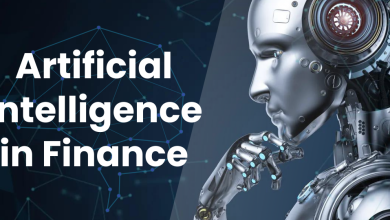
For decades, the most dominant tech platforms succeeded by building moats around something only they could truly own.
Facebook had the social graph — a map of who knows whom.
Google owned search intent — a direct signal of what people want.
Apple created the App Store — a walled garden where developer energy and consumer spending converged.
These weren’t just technical assets, as it could have seemed from the surface. They were strategic monopolies on understanding human behaviour — and turning that understanding into long-term advantage.
In 2025, we’re watching the next moat take shape. It isn’t infrastructure or even model performance.
It’s context — and the ability to remember and adapt to the user over time.
The subtle lock-in power of context
OpenAI’s recent product direction makes this clear. With persistent memory in ChatGPT, desktop agents, and cross-platform context sync, the company is clearly laying the groundwork for the deepest kind of platform stickiness we’ve seen since the iPhone.
When your assistant recalls not just your last query, but your projects, documents, priorities, and preferences, it stops being a tool. It becomes part of your workflow — part of you.
And at that point, switching providers no longer feels like trying a new app.
It feels like memory loss.
That’s the real game being played: bigger than just intelligence — the identity continuity. Whoever builds that will own more than just interaction, they will win the relationship.
So where does that leave the rest of us?
Most companies won’t build foundation models. We won’t ship agents that live across operating systems or rewrite how memory works in the cloud. And yet, the expectations set by OpenAI’s progress now apply to all of us.
Because when users experience something that feels deeply personal — that recognises them, adapts to them, and remembers them — they carry that expectation into every other product they use.
This is where companies, regardless of their technical depth, can compete — by designing products that feel increasingly personal, even when the user is anonymous.
A customer doesn’t need trillion-token pretraining. They need relevance. They want to feel seen. And they’ll reward the products that anticipate their needs, reduce repetition, and preserve continuity across touchpoints.
You don’t need to build the next App Store.
But you do need to build something your customer never wants to exit out of.
Why Pairfect focuses on Trust, not Reach
This mindset shaped how we built Pairfect — our AI-powered influencer marketing platform.
At first glance, it might seem like just another marketplace. But we’re not here to help businesses find creators with the just best reach, engagement or biggest following. That approach hasn’t worked for SMBs. Too expensive, too risky, too much noise. The real challenge isn’t visibility — it’s trust.
So, we asked a different question:
Who does your audience already trust enough to buy from?
To answer that, we had to shift focus from volume to precision. From engagement to actual outcomes. From reach to trust.
The real value is not in finding who gets the most clicks. It’s identifying the creators who can actually close the loop between product and purchase — in your niche, with your audience, at the right time.
To do that, we built a system that goes way deeper than surfaced-level metrics. Instead, we prioritise behavioural signals, niche relevance, and past campaign data. In fact, we’re building a trust graph between businesses, creators, and their audience — businesses’ customers.
We didn’t need a billion data points. We needed the right 50.
Because when it comes to influence, specificity beats scale.
From Trust Continuity to Workflow Continuity
Once you understand that continuity of trust is the real moat, the next step is to extend it into workflow. Because relationships built on context shouldn’t reset every time a new brief starts.
Pairfect removes the friction that normally breaks this continuity — endless negotiations, repeated explanations, mismatched expectations. Our system learns the nuances: that a creator doesn’t post ads on Fridays, avoids promoting gambling brands, prefers video-first campaigns, or typically replies within hours, not days.
It’s not about automation for its own sake — it’s about remembering how collaboration feels when both sides already understand each other.
By preserving this identity continuity — who you are, what you value, how you work — Pairfect creates the same kind of stickiness that made social networks or app ecosystems thrive. Only this time, it’s built on mutual understanding, not dependency.
Because when every campaign starts from context, not from scratch — trust compounds.
Context will be the Ultimate Differentiator
The next generation of AI products won’t win by being louder or faster. They’ll win by being more aware — of who the user is, what they’ve tried, what they want, and what they trust.
That’s why we built Pairfect the way we did. Not because it sounds good in a pitch deck, but because small businesses can’t afford to start from zero each time. They need systems that remember — what worked, what didn’t, and why.
In this new era, your moat isn’t just your technology. It’s the continuity of understanding — how well your product listens, learns, and evolves with the human behind the data.
Because in the end, the systems that remember us will be the ones we remember.




